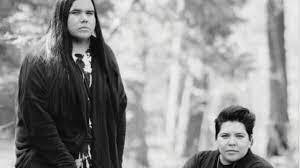News Based on facts, either observed and verified directly by the reporter, or reported and verified from knowledgeable sources.
MMIW documentary to premiere at Sundance
 Ivan and Ivy MacDonald are sibling Blackfeet filmmakers. Together, they produced "Murder in Big Horn," which will premiere at Sundance Film Festival in January 2023. Provided by Ivan MacDonald
Ivan and Ivy MacDonald are sibling Blackfeet filmmakers. Together, they produced "Murder in Big Horn," which will premiere at Sundance Film Festival in January 2023. Provided by Ivan MacDonald
“Murder in Big Horn,” a three-part documentary set on the Crow and Northern Cheyenne reservations, will premiere at the internationally acclaimed Sundance Film Festival.
Through interviews with law enforcement, state medical examiners, tribal leaders and victims’ families, the documentary tells the story of several missing or murdered Indigenous women in Montana.
Specifically, “Murder in Big Horn” follows the cases of Selena Not Afraid, 16, who was found dead in Big Horn County, Kaysera Stops Pretty Places, 18, who was found dead in Hardin, Henny Scott, 14, who was found dead near Lame Deer, and Shacaiah Harding, 19, who was last seen in Billings in 2018.
Ivan and Ivy MacDonald, sibling Blackfeet filmmakers, helped produce the series. The MacDonalds’ cousin, Ashley Loring HeavyRunner, is one of thousands of missing or murdered Indigenous women, a crisis so prevalent it has its own acronym, MMIW. HeavyRunner, 20, was last seen on the Blackfeet reservation in 2017.
“Murder in Big Horn,” Ivan said, stands out from other MMIW series in its “depth and breadth” of coverage.
“This is really a deep dive into these structural aspects of jurisdiction in Indian Country, legal barriers to justice, the political and cultural climate and why these cases aren’t taken seriously,” he said.
The series will premiere at Sundance, the largest independent film festival in the U.S., on Jan. 22. It will be available to view online from Jan. 24 to 29, and it will also premiere on Showtime in the New Year.
Ivan and Ivy produced “Blackfeet Boxing: Not Invisible,” an award-winning documentary about MMIW and resilience, and they have two other documentaries in post-production stages — one on bison revitalization efforts on the Blackfeet Reservation and one on the MMIW crisis in the Blackfeet community.
Ivan said authentic Native representation in film is vital.
“Television is one of the ways in which non-Indigenous communities learn about Indigenous communities,” he said. “We’ve been historically excluded from that space, and there’s been misinformation and miseducation. Now, not only are people learning about Indigenous people, but Indigenous people are behind the camera telling these stories.”
While Ivan said Native people have known about the MMIW crisis for decades, many non-Native viewers may be unaware.
“I hope this series provides education and insight,” he said. “This community has faced hundreds of years of injustice.”
“Murder in Big Horn” is directed by Razelle Benally, Oglala Lakota/Diné, and Matthew Galkin and produced by the MacDonald siblings and Benally. The National Indigenous Women’s Resource Center, based in Lame Deer, partnered with filmmakers to offer advocacy and resources.
While Native Americans comprise about 6.7% of Montana’s population, they account for, on average, 26% of the state’s active missing persons cases.
For more information, visit festival.sundance.org.

Sandra Spang
i wrote an article called “Savages” showing that when non-natives began invading the land they would not have lasted long without the civilized natives they found there. Because the attitude that our skin was a different color and how we lived was different, we were not truly human.That attitude has been passed on and gives them no guilt when a Native life is tortured and ended.